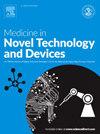Emerging strategies and multifunctional applications of nanomaterials in modern nanomedicine
Q3 Medicine
引用次数: 0
Abstract
The growing complexity of diseases, alongside the limitations of conventional therapies and the rise of multidrug resistance, underscores the pressing need for innovative treatment paradigms. Herein, we highlight the transformative potential of nanomaterials in modern nanomedicine, focusing on their ability to enable precise, targeted, and multifunctional therapeutic interventions. However, despite their promise, clinical translation remains constrained by several challenges, including immune clearance, systemic toxicity, scalability and a lack of long-term safety data. This review systematically presents emerging strategies that are redefining nanomaterial applications in medicine. These include surface functionalization strategies to enhance targeting specificity, hybrid nanomaterial systems for combined therapeutic and diagnostic (theranostic) functions, and stimuli-responsive strategies for controlled, site-specific drug release. We further examine biomimetic strategies that enable immune evasion by mimicking natural cellular membranes, and scaffold-based approaches that support tissue engineering and regenerative medicine. In the context of oncology, we explore strategies to overcome multidrug resistance through the co-delivery of chemotherapeutics and gene modulators. Finally, we emphasize the role of artificial intelligence (AI)-driven strategies in optimizing nanomaterial design, facilitating high-throughput screening, and predicting biological interactions. Collectively, these advancements offer a robust framework for developing next-generation nanotherapeutics that align with the goals of personalized medicine by improving precision, safety, and clinical efficacy.
纳米材料在现代纳米医学中的新兴策略和多功能应用
疾病日益复杂,加上常规疗法的局限性和多药耐药性的上升,突出表明迫切需要创新的治疗模式。在此,我们强调了纳米材料在现代纳米医学中的变革潜力,重点关注它们实现精确、有针对性和多功能治疗干预的能力。然而,尽管前景光明,临床转化仍然受到一些挑战的限制,包括免疫清除、全身毒性、可扩展性和缺乏长期安全性数据。这篇综述系统地介绍了正在重新定义纳米材料在医学中的应用的新兴策略。其中包括增强靶向特异性的表面功能化策略,用于综合治疗和诊断(治疗)功能的混合纳米材料系统,以及用于控制特定部位药物释放的刺激响应策略。我们进一步研究了通过模仿天然细胞膜实现免疫逃避的仿生策略,以及支持组织工程和再生医学的基于支架的方法。在肿瘤学的背景下,我们探索通过化疗药物和基因调节剂的共同递送来克服多药耐药的策略。最后,我们强调了人工智能(AI)驱动策略在优化纳米材料设计、促进高通量筛选和预测生物相互作用方面的作用。总的来说,这些进步为开发下一代纳米疗法提供了一个强大的框架,这些疗法通过提高准确性、安全性和临床疗效,与个性化医疗的目标保持一致。
本文章由计算机程序翻译,如有差异,请以英文原文为准。
求助全文
约1分钟内获得全文
求助全文
来源期刊

Medicine in Novel Technology and Devices
Medicine-Medicine (miscellaneous)
CiteScore
3.00
自引率
0.00%
发文量
74
审稿时长
64 days
 求助内容:
求助内容: 应助结果提醒方式:
应助结果提醒方式:


